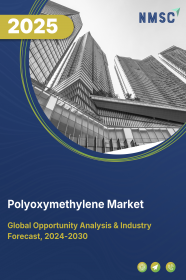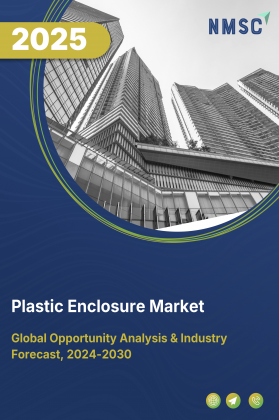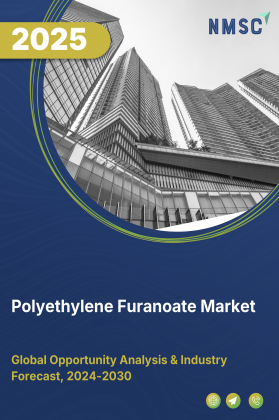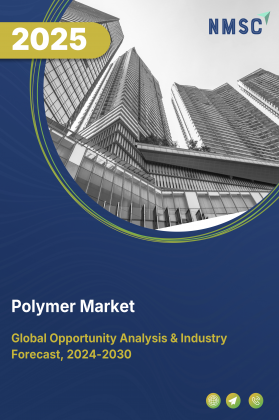
Polyoxymethylene Market by Type (Homopolymer and Copolymer), by Process (Injection Molding, Extrusion Molding, and Blow Molding), by Grade (Standard, Reinforced, Impact Modified, Recycled, and Others), by End-User (Electrical & Electronics, Building & Construction, Automotive, Aerospace, Medical & Healthcare, Packaging, and Others) – Global Opportunity Analysis and Industry Forecast, 2025–2030
Polyoxymethylene (POM) Industry Overview
The global Polyoxymethylene Market size was valued at USD 4.48 billion in 2024, and is expected to be valued at USD 4.73 billion by the end of 2025. The industry is predicted to reach USD 6.20 billion by 2030 with a CAGR of 5.6% from 2025-2030.
POM, also known as acetal or polyacetal, is an engineering thermoplastic known for its high stiffness, low friction, and excellent dimensional stability. It is widely used as a metal replacement in precision parts for automotive, electronics, medical devices, and packaging applications. The market is witnessing strong growth due to the increasing demand for lightweight and durable materials, especially in the automotive and packaging industries. However, competition from cheaper alternatives such as polypropylene and nylon presents a significant market restraint. Nevertheless, the development of sustainable and bio-based POM grades opens new opportunities for market players in the years ahead.
Increasing Automotive Production Drives Market Growth
One of the primary drivers of the polyoxymethylene market growth is the rising demand from the automotive industry for lightweight and high-performance materials. Automakers are actively seeking alternatives to metals in order to meet stringent emission standards and improve fuel efficiency. POM, with its high mechanical strength and wear resistance, is an ideal substitute for metal parts in gears, fuel system components, and door handles. With global vehicle sales reaching 76.7 million units in 2023, the need for advanced thermoplastics such as POM is expected to grow significantly in the coming years.
Expanding Applications in Medical and Packaging Industries Drive Market Growth
The global polyoxymethylene industry is witnessing robust growth, driven by its expanding applications across the medical and packaging sectors. In the healthcare industry, POM market demand is increasingly being used in the manufacture of precision components for devices such as insulin pens, inhalers, diagnostic equipment, and surgical instruments due to its excellent biocompatibility, dimensional stability, and resistance to repeated sterilization processes. Additionally, the packaging industry is emerging as a key growth avenue, with engineering thermoplastics gaining popularity in the production of lightweight, durable closures, dispensing systems, and other functional packaging components. Its suitability for food contact applications and ability to maintain performance under high mechanical stress make it a preferred choice, particularly in pharmaceutical and food-grade packaging solutions. These evolving use cases are significantly contributing to the broader adoption of POM across industries.
Surging Demand for Flexible Plastic Packaging Drives Market Growth
According to a recent report by the world packaging organization (WPO), the global flexible plastic packaging market was valued at USD 248.9 billion in 2022 and is expected to reach USD 315.5 billion by 2027, growing at a compound annual growth rate (CAGR) of 4.8% during the forecast period. This robust expansion is fueled by the rising demand for lightweight, cost-effective, and sustainable packaging solutions across various end-use industries such as food & beverages, pharmaceuticals, and personal care. As manufacturers increasingly prioritize enhanced functionality and reduced material consumption, the use of advanced polymers like polyformaldehyde is gaining traction. This shift is significantly contributing to the growth of the polyformaldehyde market, as it offers excellent mechanical strength, chemical resistance, and recyclability—key attributes sought after in modern packaging applications.
Environmental Impact and High Cost Restrain the Market Growth
Despite its advantages, the non-biodegradable nature of POM market trends and its release of toxic formaldehyde upon degradation are environmental concerns limiting its adoption. Additionally, the availability of less expensive materials like nylon and polypropylene puts pressure on market pricing and share. These restraints can impact the growth of high-performance plastics in cost-sensitive applications unless innovations in recycling and sustainable sourcing are adopted at scale.
Sustainability and Bio-based Solutions Unlock Future Opportunities
Innovations in chemical recycling and the development of bio-based POM grades offer promising growth opportunities for the market. Companies such as Polyplastics have introduced eco-friendly variants like Duracon POM with cellulose fiber, reflecting industry trends towards sustainability. These advancements not only reduce the environmental footprint of POM but also expand its usability in regulated industries such as medical and food packaging.
Market Segmentation and Scope of the Study
The polyoxymethylene market report is segmented by type, process, grade, end user, and region. By type, the market is divided into homopolymer and copolymer. The process segment includes injection molding, extrusion molding, blow molding, and others. Grades covered in the report include standard, reinforced, impact modified, recycled, and others. Based on end user, the market is segmented into automotive, electrical & electronics, medical & healthcare, aerospace, packaging, building & construction, and others. Regionally, the analysis includes North America, Europe, Asia-Pacific, and the Rest of the World (RoW).
Geographical Analysis
North America is a major region in the polyoxymethylene market share and is expected to maintain this position throughout the forecast period. This is primarily driven by significant government initiatives, particularly in the aerospace sector in countries like the U.S., Canada, and Mexico. These initiatives focus on enhancing aerospace manufacturing capabilities, increasing aircraft production, and promoting research into lightweight materials. For instance, NASA's allocation of USD 966 million for the aeronautics program in 2025 to develop hybrid-electric jet engines and lightweight aircraft structures has spurred the demand for POM, which is used to produce components such as gears, fuel system parts, and fasteners. Furthermore, the growing packaging sector in North America is increasing the demand for POM due to its high durability and chemical resistance, making it an ideal material for packaging food and beverages. According to the Association of Packaging and Processing Technologies, the sales volume of packaging units for food products in Mexico is expected to reach 65 billion units by 2025, up from 62.7 billion units in 2021, further driving the demand for POM.
Europe is another key region in the global market share, primarily driven by the automotive sector, where POM is widely used in components such as fuel systems, gears, and other parts requiring high performance under various conditions. With an increasing focus on electric vehicles (EVs) and lightweight materials, the demand for POM in the automotive industry is expected to rise significantly. Germany, the largest automotive market in Europe, is a major consumer of POM, as car manufacturers in the country incorporate lightweight and durable materials into their vehicle designs to improve fuel efficiency and reduce emissions. Additionally, the healthcare industry in Europe is seeing a rise in the demand for medical-grade POM due to its biocompatibility, making it suitable for drug delivery systems and medical devices.
In the Asia-Pacific region, which holds a significant share of the global market, the demand for POM is expected to grow significantly, driven by booming automotive and construction sectors. In China, the growing car production, reaching 21.32 million cars in 2023 accelerates the demand for POM in automotive applications. Similarly, the increasing construction activities in countries like India, where the construction industry is expected to reach USD 1.4 trillion by 2025, are driving the demand for durable, high-performance components made from POM. The expansion of the market in Asia-Pacific, projected to grow at a CAGR of 6.8% from 2024 to 2030, also adds to the region's growing significance in the global market.
The Latin America market for POM is still developing but is showing significant potential. In countries like Brazil and Mexico, the automotive sector is expanding, creating a growing demand for POM in the production of parts that require durability and resistance to wear and tear. In Mexico, the automotive industry plays a vital role in the economy, with the country being a major manufacturing hub for international car brands. The medical industry in Latin America is also experiencing growth, with increased demand for medical-grade POM for various applications such as medical devices and drug delivery systems. The ongoing expansion of the construction sector in the region further contributes to the demand for POM in applications requiring high strength and chemical resistance.
Strategic Innovations Adopted by Key Players
In the polyoxymethylene industry, leading companies such as Polyplastics, Celanese Corporation, BASF SE, DuPont, and Korea Engineering Plastics are adopting several strategic innovations to strengthen their market position and meet evolving customer demands. These companies are investing heavily in research and development (R&D) to develop bio-based and recycled POM solutions, reflecting the growing emphasis on sustainability. For instance, Celanese’s acquisition of DuPont’s Mobility & Materials segment significantly expanded its POM product portfolio, allowing it to offer more diverse and sustainable solutions. Additionally, these companies are exploring advanced processing technologies, including compounding and additive integration, to fine-tune material properties for specific applications. This focus on innovation is not just driven by sustainability goals but also by the need to enhance material performance, which has become a critical purchasing factor for customers.
As sustainability continues to be a key driver in the market, companies are aligning their product offerings to meet these expectations. Biesterfeld Plastic GmbH's collaboration with Delrin to distribute Delrin POM across Europe, the Middle East, and Africa is an example of how companies are expanding their reach while ensuring access to high-performance materials. Polyplastics' launch of Duracon PO, a new POM grade designed specifically for medical applications, further showcases how companies are catering to specialized industries with advanced material properties. Additionally, BASF SE’s partnership with Albis and Ultra polymers Group highlights the importance of collaboration in enhancing product distribution while maintaining a strong focus on ongoing research and development.
In conclusion, the polyoxymethylene market is undergoing significant transformations as companies continue to innovate and adopt strategies that not only meet sustainability goals but also cater to the increasing demand for high-performance materials. The successful integration of advanced processing technologies, strategic acquisitions, and global partnerships will play a key role in maintaining a competitive edge in this dynamic market. Companies that can deliver eco-friendly alternatives with superior mechanical properties are well-positioned to thrive as the market continues to evolve.
Key Benefits
-
The report provides quantitative analysis and estimations of the market from 2025 to 2030, which assists in identifying the prevailing market opportunities.
-
The study comprises a deep dive analysis of the market including the current and future trends to depict prevalent investment pockets in the market.
-
Information related to key drivers, restraints, and opportunities and their impact on the market is provided in the report.
-
Competitive analysis of the players, along with their market share is provided in the report.
-
SWOT analysis and Porters Five Forces model is elaborated in the study.
-
Value chain analysis in the market study provides a clear picture of roles of stakeholders.
Polyoxymethylene Market Key Segments
By Type
-
Homopolymer
-
Copolymer
By Process
-
Injection Molding
-
Extrusion Molding
-
Blow Molding
By Grade
-
Low Friction
-
Low VOC
-
Conductive
-
Anti-Static
-
Flame Retardant
By End-User
-
Electrical & Electronics
-
Building & Construction
-
Automotive
-
Aerospace
-
Medical & Healthcare
-
Packaging
-
Consumer goods
-
Others
By Region
-
North America
-
The U.S.
-
Canada
-
Mexico
-
-
Europe
-
The UK
-
Germany
-
France
-
Italy
-
Spain
-
Denmark
-
Netherlands
-
Finland
-
Sweden
-
Norway
-
Russia
-
Rest of Europe
-
-
Asia-Pacific
-
China
-
Japan
-
India
-
South Korea
-
Australia
-
Indonesia
-
Singapore
-
Taiwan
-
Thailand
-
Rest of Asia Pacific
-
-
RoW
-
Latin America
-
Middle East
-
Africa
-
Key Players
-
Celanese Corporation
-
Polyplastics Co. Ltd.
-
Mitsubishi Gas Chemical Company
-
Chemieuro
-
BASF SE
-
LG Chem Ltd.
-
Biesterfeld Plastic GmbH
-
Asahi Kasei Corporation
-
Westlake Plastics
-
KOLON Corp
-
RTP Company
-
Shenzhen Xiongyihua Plastic Insulation LTD
-
Guangzhou Ninge Plastics Co., Ltd
-
S.S.B. POLYMERS & S.S.B. ENTERPRISES
-
Roechling Machined Plastics
REPORT SCOPE AND SEGMENTATION
|
Parameters |
Details |
|
Market Size in 2024 |
USD 4.48 Billion |
|
Revenue Forecast in 2030 |
USD 6.20 Billion |
|
Growth Rate |
CAGR of 5.6% from 2025 to 2030 |
|
Analysis Period |
2024–2030 |
|
Base Year Considered |
2024 |
|
Forecast Period |
2025–2030 |
|
Market Size Estimation |
Billion (USD) |
|
Growth Factors |
|
|
Countries Covered |
28 |
|
Companies Profiled |
15 |
|
Market Share |
Available for 10 companies |
|
Customization Scope |
Free customization (equivalent up to 80 working hours of analysts) after purchase. Addition or alteration to country, regional, and segment scope. |
|
Pricing and Purchase Options |
Avail customized purchase options to meet your exact research needs. |

















 Speak to Our Analyst
Speak to Our Analyst





















